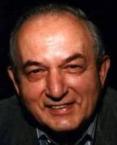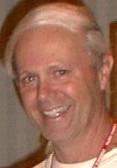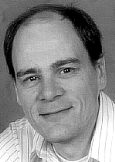 | Meet Your Makers |
This page is a tribute to the people that designed and illustrated the pinball games we collect today. It is their work and creativity that appeals to our emotions and they deserve our recognition. That said, it's hard to do find out about people you don't know, who live in another country, belong to another generation, and who remained almost anonymous at Gottlieb insistence. The information gathered here comes from numerous sources including the Internet Pinball Database, the rec.games.pinball newsgroup, some personal contact, and numerous websites. We know it's not a complete roll-call, so if there are any inaccuracies, additional information or demands to be included, please let us know! | |||||||||||||||||||||||||||||||||||||
ED KRYNSKIA Gottlieb stalwart, designing 206 games (or so) over 2 decades and helping to keep Gottlieb in top spot. Krynski was the father of the drop-target, which are an almost ever present feature of his games. His first pin was Dodge City in July 1965 and his last was Amazon Hunt in September 1983 (later copied in a conversion kit, "Amazon Hunt II" in May 1987). 125 of Krinski's pins featured the artwork of Gordon Morison - their last 3 collaborations were: the Amazing Spiderman, Circus and Counterforce. He also designed the playfield of Super Orbit, a game without drop-targets, but he did that in 1972 when the original game, Orbit, came out! Ed Krynski attended several Pinball Expo events in Chicago in recent years but he sadly passed away aged 77 on 16.November 2004. GORDON MORISONMorison was a prolific artist for Gottlieb, although he actually worked for their supplier, Advertising Posters Inc., but on an exclusive basis for Gottlieb. He had a near monopoly during the 70s and a total credit of 137 Gottlieb pins, starting with Galaxie in January 1971 and finishing with the remarkable Asteroid Annie & the Aliens in December 1980. Instantly recognisable, his wonderful comic-book style depictions of beautiful girls with curves and flowing hair were apparently often girlfriends. The name of the girl next to Buck Rogers is hidden in her "bikini" top. A common but not universal trait of Morison's graphics is a pointing finger. The System 80 Series gives 4 Gordon Morison works: the Amazing Spiderman, Circus, Counterforce and Star Race. After Gottlieb, Morison worked for Stern although he is not credited for any pins. Reportedly Morison was still working 60-80 hours weeks as a freelance graphic artist at the age of 70! You can read more about the man as remembered at Pinball Expo 2000 by a close friend, Dr. Keith Egging in Russ Jensen's notes. Morison was rather camera-shy but Keith Egging very kindly provided us with this photo of Gordon, taken in Keith's office about 6 months before his passing in July 2000. Gordon's great artwork lives on! DOUG WATSONWatson was hired by Advertising Posters Inc. in 1979, having studied fine art at Northern Illinois University. He subsequently recorded 27 artwork credits in the period 1980-96, remarkably producing work for all of Chicago's big four: Stern, Williams, Bally/Midway and Gottlieb. Watson's quality work was what counted with the artist behind several pinball masterpieces like Indiana Jones, Black Knight, Swords of Fury and Barracora, to name just a few of his non-Gottlieb works. His outings for Gottlieb came early in his career when he was still with Advertising Posters but assigned to work on Gottlieb games alongside Gordon Morison. Watson's artistic style lent itself to oil painting to be recreated on backglasses with the new 4-colour process, however Gottlieb again showed their resistance to moving forward by insting on sticking to line-art. His first work for Gottlieb, Panthera, was followed by the licensed James Bond 007 pin, and his final Gottlieb piece, Devil's Dare, at least made up for this and showedg his obvious love of and skills in fantasy artwork. Doug Watson is now working as a freelance graphic artist and designer. See more of Doug's work at Dangerous Dann's website. JOHN TRUDEAUStarted his career with GamePlan as a game tester in 1979, then became foreman and was then recruited into the engineering department where he worked until the company folded in 1982. Trudeau then worked for Gottlieb designing a string of System 80 games, most of which had very innovative and unusual playfield layouts: Spirit, Rocky, Striker, Krull, Alien Star and Q*bert's Quest. When the Game Over lamp lit at Gottlieb/Premier, Trudeau worked for Bally-Midway/Williams on games such as Creature from the Black Lagoon, Judge Dredd and Congo. John Trudeau also goes under the pseudonym of "Dr. Flash" and he's currently living in New York. In January 2005 he gave an interview to Jim Palson and was the special guest on TOPcast show 10 on 4 March 2007. ADOLF SEITZ Jr.An Austrian-born designer with just 7 credits to his name in the period 1981-84, however he joined Gottlieb in 1972 already. All his design work was for Gottlieb System 80/80A games with Goin' Nuts (10 prototypes only, not produced), The Games and Alien Star (co-designs with John Trudeau), Ready...Aim...Fire!, Touchdown, the legendary Black Hole and its spin-off Eclipse - the latter 2 both co-designed with John Buras. Seitz is also named in the US patent certificate as a co-inventor of the backbox used on Caveman, and also the pinball-video game concept. JOHN OSBORNEWorked as an engineer/designer at Gottlieb for more than a decade from 1972-84 but during this time he only amassed 9 pinball design credits, which included 2 System 80 pinballs: Force II and the legendary Haunted House. John Osborne now lives in Stanton, California and has a passion for pianolas! Osborne is obviously still proud of his pinball creations and besides having spoken at recent Pinball Expo events in Chicago, he has penned articles on his time at Gottlieb and his work on Haunted House for GameRoom Magazine, and he was the special guest on TOPcast show 34 on 16 May 2007. ALLEN EDWALLA graduate of Iowa State University with a B.Sc. in Electrical Engineering, he was originally employed by Gottlieb in 1974 to help with the company's switch to electronic games, Edwall, "cherished complexity" according to John Osborne, and was responsible for the reprogramming of Haunted House prior to its release. He left Gottlieb in 1982 but worked for Premier Technology from 1988-95. Edwall is credited with the design of 5 games, including 3 System 80's: Panthera, Time Line and James Bond 007. The latter 2 games both utilised a time-based playing concept, which Edwall himself invented and holds the paptent to. Edwall is also credited with the programming for 6 other Gottlieb games, spread over a decade up to 1995. Today, Edwall is living in California and is deeply involved in personal astrolgical programmes. You can read his resume here. TERRY DOERZAPHWorked as an artist for Gottlieb for 4 years in the early 80s on both video-games and 6 pinball projects: Black Hole, Haunted House, Spirit, Caveman, Punk! and Royal Flush Deluxe". Tim Ferrante of Gameroom Magazine also credits him with working on Volcano, however the IPDB credits this to David Moore alone. Doerzaph did though do the side-art for the Q*Bert's Qubes video-game. Terry Doerzaph described his time at Gottlieb as the best of his life. He is now running his own graphic design agency in the Chicago area and still owns original artwork he created for BH, HH and Spirit.
| |||||||||||||||||||||||||||||||||||||
JOHN WEST BURASWorking for Gottlieb was something of a family tradition and Buras worked part-time for the company from 1973 whilst still a student. He studied Electronic Engineering Technology and after graduating he joined Gottlieb full-time in 1977, at a time when games were turning to electronics. Buras worked under the great Ed Krynski: nobody could have wished for a better mentor and tutuor than that. Buras was co-designer of Black Hole and Eclipse with Adolf Seitz Jr., and individual design credits on Star Race, Mars God of War, Pink Panther, Caveman, Rack 'Em Up, and Bounty Hunter, of the System 80/80A series. Has other credits for System 1 games: Asteroid Annie & the Aliens, Buck Rogers and Torch, and later Strikes and Spares. He left Gottlieb in 1984 when it became Mylstar but later rejoined when it became Premier, working with John Trudeau to develop the System 3 board-set, which to this day is still considered the best-ever pinball system. You can read Jim Palson's interview with John Buras here.
| |||||||||||||||||||||||||||||||||||||









